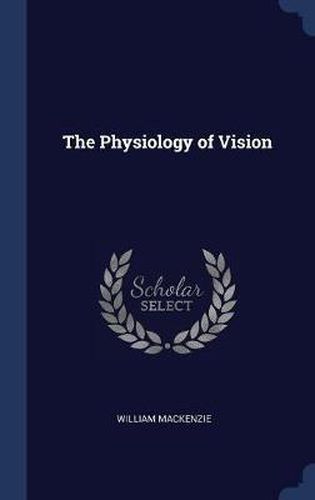Readings Newsletter
Become a Readings Member to make your shopping experience even easier.
Sign in or sign up for free!
You’re not far away from qualifying for FREE standard shipping within Australia
You’ve qualified for FREE standard shipping within Australia
The cart is loading…






This historic book may have numerous typos and missing text. Purchasers can download a free scanned copy of the original book (without typos) from the publisher. Not indexed. Not illustrated. 1841 Excerpt: …a very small beam of light falling directly on the retina is sufficient to produce an impression. Thus, in a dark night, the feeble light of a candle is perceptible at a great distance; and the fixed stars, though they have no sensible diameters, are yet very visible. 84. Nearest and farthest limits of distinct vision. Vision by diverging, parallel, and converging rays. When the eye is in a quiescent state, no effort of any kind being used by any of its parts, it is suited to see with perfect vision at some one determinate moderate distance, which, for most eyes, is about 15 or 16 inches. This is sometimes called the distance of perfect indolent vision, or the natural distance of the eye. When the object is small, such as the letters of a printed book, the distance at which it will be most easily seen is less; perhaps 12 inches. To the generality of eyes, the nearest distance of distinct vision is about 7 or 8 inches. At this distance they commonly read a small print, and examine all sorts of minute objects, such as the divisions of a finely graduated scale. Myopic eyes can see small objects best at the distance of 6, 4, or even 3 inches; and presbyopic eyes at no less distance than 12, 15, or 20 inches; but at present we speak of eyes of natural conformation and youthful vigour. While the least distance of distinct vision is universally acknowledged to be 7 or 8 inches, considerable diversity of opinion has existed regarding the limitation of its greatest distance. Porterfield states the greatest distance of distinct vision for his own eye to be 27 inches. Jurin calculated that a good eye could accommodate itself to see an object with perfect vision at the distance of 14 feet, 5 inches. Other authors appear to be of opinion that there is no maximum …
$9.00 standard shipping within Australia
FREE standard shipping within Australia for orders over $100.00
Express & International shipping calculated at checkout
This historic book may have numerous typos and missing text. Purchasers can download a free scanned copy of the original book (without typos) from the publisher. Not indexed. Not illustrated. 1841 Excerpt: …a very small beam of light falling directly on the retina is sufficient to produce an impression. Thus, in a dark night, the feeble light of a candle is perceptible at a great distance; and the fixed stars, though they have no sensible diameters, are yet very visible. 84. Nearest and farthest limits of distinct vision. Vision by diverging, parallel, and converging rays. When the eye is in a quiescent state, no effort of any kind being used by any of its parts, it is suited to see with perfect vision at some one determinate moderate distance, which, for most eyes, is about 15 or 16 inches. This is sometimes called the distance of perfect indolent vision, or the natural distance of the eye. When the object is small, such as the letters of a printed book, the distance at which it will be most easily seen is less; perhaps 12 inches. To the generality of eyes, the nearest distance of distinct vision is about 7 or 8 inches. At this distance they commonly read a small print, and examine all sorts of minute objects, such as the divisions of a finely graduated scale. Myopic eyes can see small objects best at the distance of 6, 4, or even 3 inches; and presbyopic eyes at no less distance than 12, 15, or 20 inches; but at present we speak of eyes of natural conformation and youthful vigour. While the least distance of distinct vision is universally acknowledged to be 7 or 8 inches, considerable diversity of opinion has existed regarding the limitation of its greatest distance. Porterfield states the greatest distance of distinct vision for his own eye to be 27 inches. Jurin calculated that a good eye could accommodate itself to see an object with perfect vision at the distance of 14 feet, 5 inches. Other authors appear to be of opinion that there is no maximum …